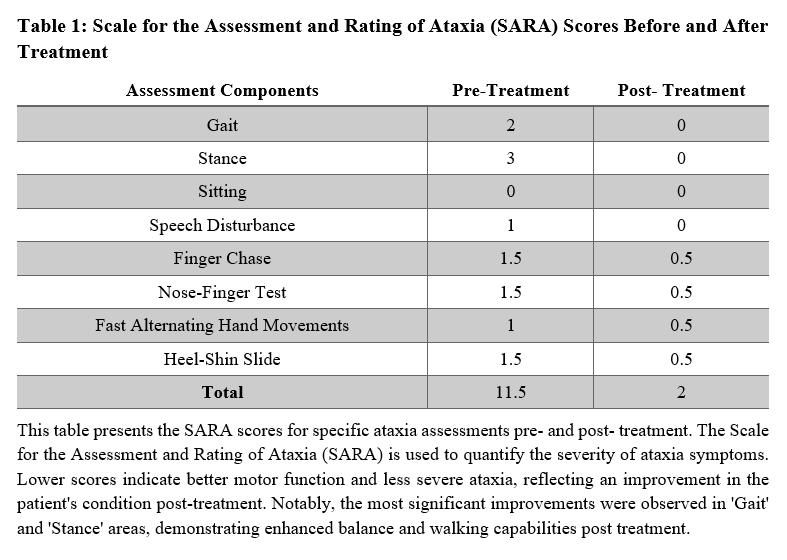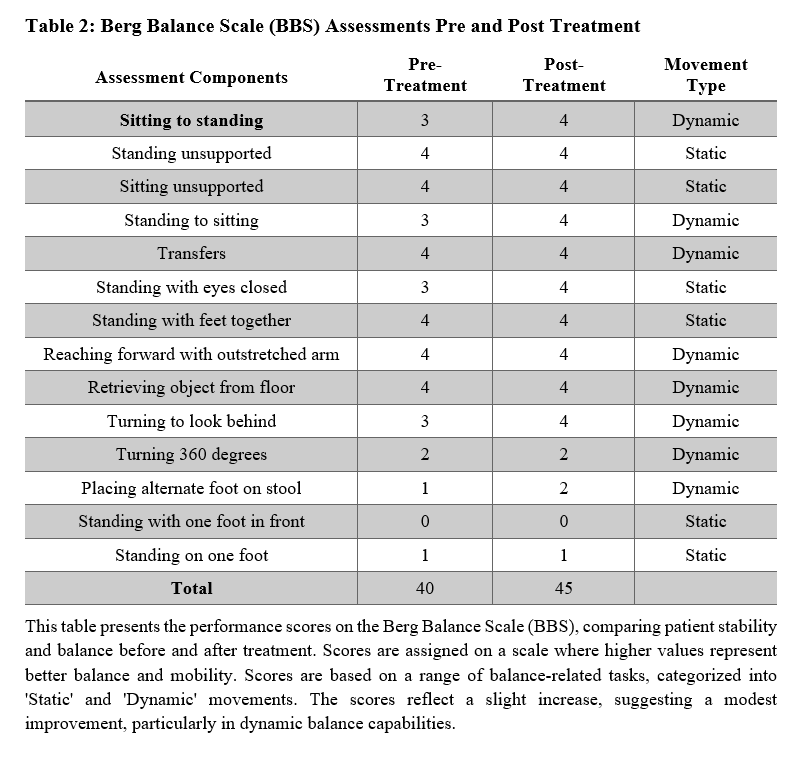Category: Ataxia
Objective: To evaluate the effectiveness of Transcranial Magnetic Stimulation (TMS) in improving ataxia and gait in a patient with Relapsing-Remitting Multiple Sclerosis (RRMS).
Background: Multiple sclerosis (MS) is a chronic autoimmune disease characterized by demyelination and neurodegeneration in the central nervous system. Ataxia and gait disturbances are common symptoms that significantly impact the quality of life in MS patients. TMS has emerged as a potential non-invasive therapeutic modality for neurological disorders, including MS.
Method: A 28-year-old male was diagnosed with Relapsing-Remitting Multiple Sclerosis (RRMS) in 2021 which was confirmed by MRI findings and McDonald diagnostic criteria. The symptoms began in 2014 with intermittent numbness. The patient’s symptoms worsened in 2021 with blurred and double vision, difficulty speaking, numbness and tingling throughout his body, and unsteady, staggering gait. In 2021, the patient initially received interferon beta-1a as treatment, which was later replaced with azathioprine in 2022-Present. While his symptoms improved, residual issues continued to cause discomfort. The patient underwent a series of 10 TMS sessions in January 2024. The TMS protocol involved stimulation of the bilateral M area with intermittent Theta Burst Stimulation (iTBS) and the supplementary motor cortex (SMA) with repetitive TMS (rTMS) at 10Hz with total 2000 pulses. The Scale for Assessment and Rating of Ataxia (SARA) and the Berg Balance Scale (BBS) were used to evaluate ataxia and balance before and after the TMS treatment.
Results: Prior to TMS treatment, the patient’s SARA score was 11.5, and the BBS score was 40, indicating significant ataxia and balance impairment. After 10 consecutive sessions of TMS, the patient demonstrated remarkable improvement, with a SARA score reduced to 2 and a BBS score increased to 45. Among all aspects evaluated in the SARA, the most prominent improvements were observed in the stance and gait areas, while the BBS Score showed increases particularly in the dynamic aspects.
Conclusion: This case study suggests that TMS may be an effective therapeutic tool for improving ataxia and gait in patients with RRMS. Further research is warranted to establish the long-term efficacy and optimal TMS protocols for treating MS-related symptoms.
Table 1: (SARA) Scores Before and After Treatment
Table 2: (BBS) Assessments Pre and Post Treatment
To cite this abstract in AMA style:
NA. Megayasa, A. Tiksnadi, D. Tunjungsari. Ataxia and Gait Improvement in Relapsing-Remitting Multiple Sclerosis After Transcranial Magnetic Stimulation (TMS): A Case Study [abstract]. Mov Disord. 2024; 39 (suppl 1). https://www.mdsabstracts.org/abstract/ataxia-and-gait-improvement-in-relapsing-remitting-multiple-sclerosis-after-transcranial-magnetic-stimulation-tms-a-case-study/. Accessed December 19, 2025.« Back to 2024 International Congress
MDS Abstracts - https://www.mdsabstracts.org/abstract/ataxia-and-gait-improvement-in-relapsing-remitting-multiple-sclerosis-after-transcranial-magnetic-stimulation-tms-a-case-study/


